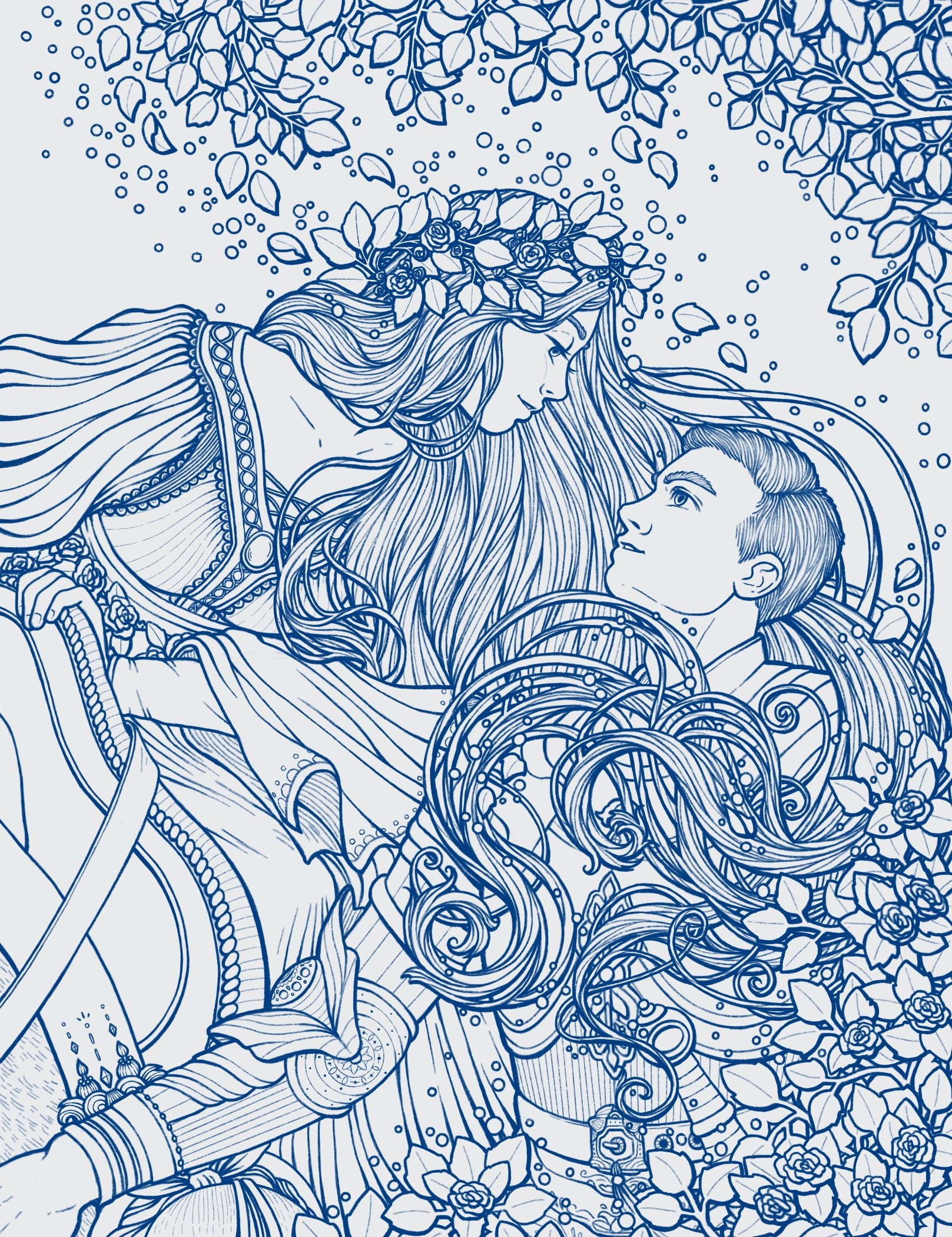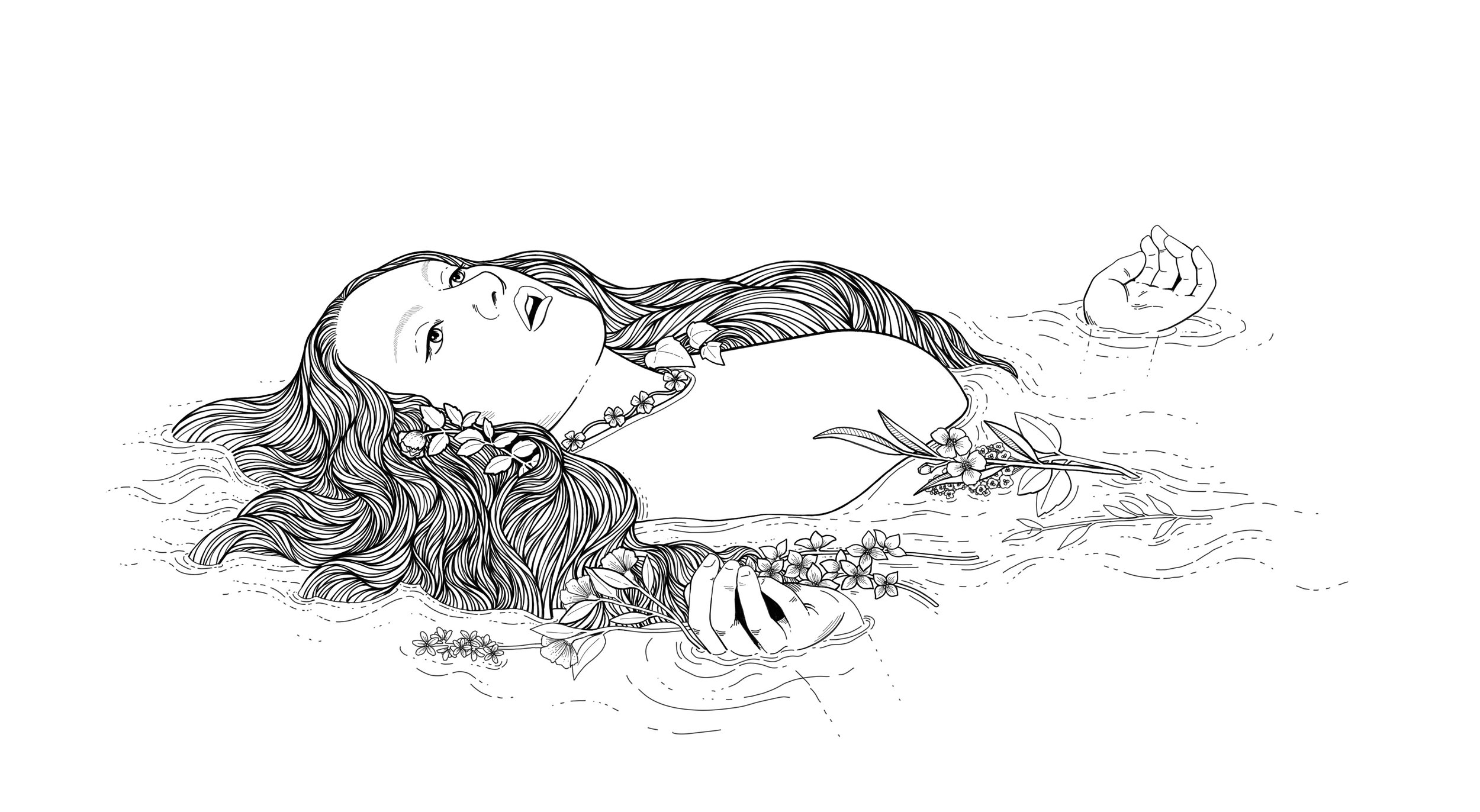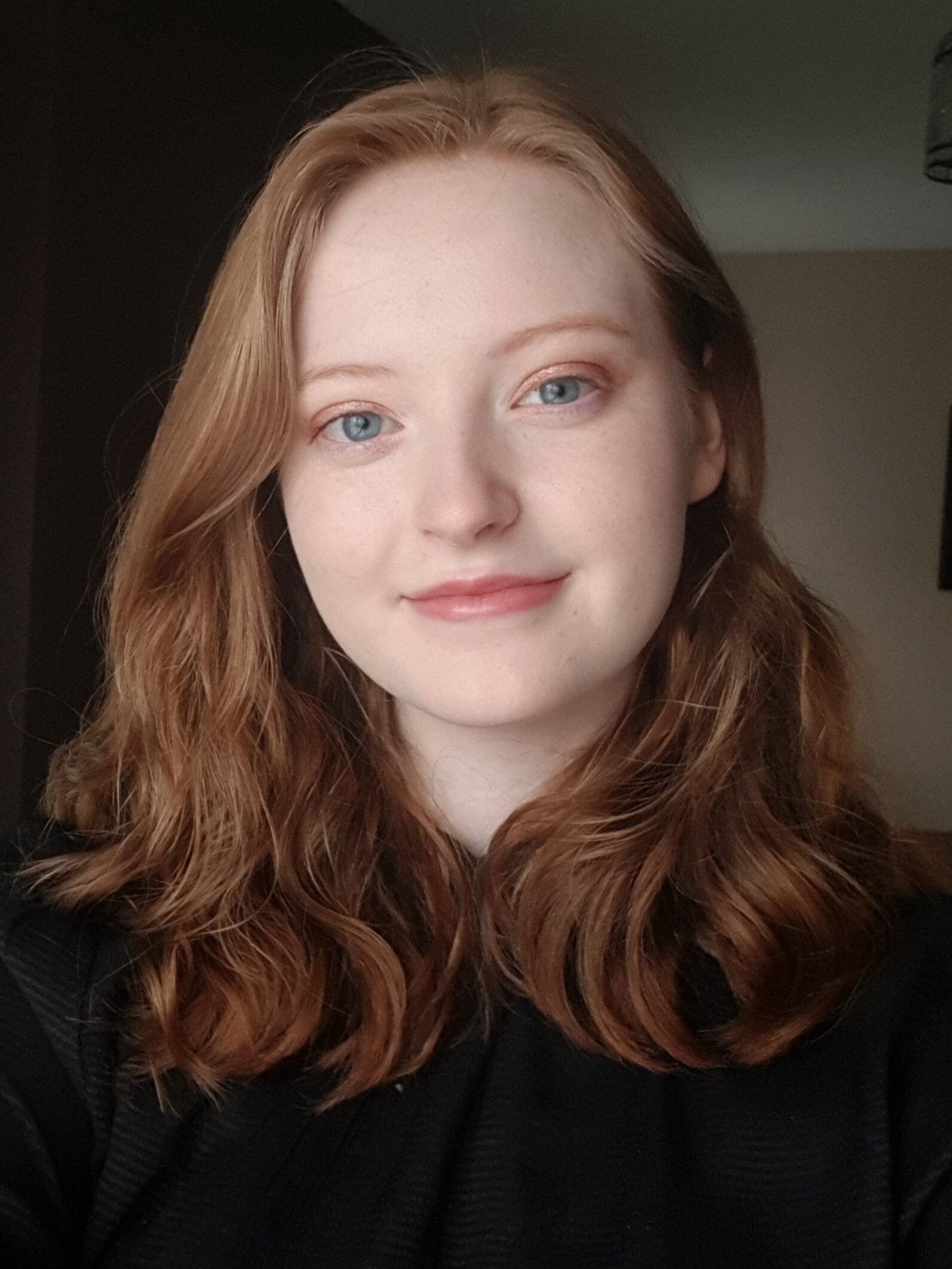Rebecca Lively
Mixed Media Artist
My name is Rebecca Lively and I was born in Belfast in 2001, although I grew up outside of a small village in Newry in the countryside. My family is small and very supportive of the arts, with my brother Jordan being a talented musician and my mother showing me all she knows from her days of teaching art.
When I was younger, I loved reading and I idolised writers like Jacqueline Wilson, R.J. Anderson, and Derek Landy, and so I thought that I wanted to be a writer too. I always got lost in the illustrations while I read and eventually, I tried drawing scenes from my favourite books. Once I discovered my love of art, I knew that I wanted to spend every hour doing it. My childhood was spent drawing, stitching, sculpting – anything I could do to be creative. Although it took me a while to make anything that looked good, my parents would proudly hang my pictures on the fridge, some of which are still there a decade later!
My mother has had a huge influence on my art, as she has always been my role model. Not only is she an amazing woman, but her skill and knowledge about art is something I’ve always admired. It was my mother who introduced me to my favourite art movement, the Pre-Raphaelite Brotherhood, which influences all my work. She showed me postcards that she had kept from her teaching days, featuring ethereal red-haired women surrounded by nature. I remember being enveloped by the beauty and serenity of those paintings, and I strived to incorporate it into my own work.


Another aspect of Pre-Raphaelite art that appealed to me was how the women looked like me – they were pale gingers with white eyebrows. Although I felt insecure about how I looked, I looked at these women like they were the epitome of beauty. I realised then the power of representation in media, because if you can appreciate the beauty of someone who looks like you, then you can learn to appreciate yourself too.
Although I had learned to like my hair, I struggled to accept myself when I realised I was gay. It took me a while to discover this about myself, as I didn’t know you could be gay when I was younger. I had never seen a gay couple on TV or read about one. Everyone in my class was straight, with all the girls having crushes on boybands and actors, which I never understood. I was also raised Catholic, so it was never discussed in church and very rarely in school. My first introduction to the LGBT community was through a news report, which featured a flood of homophobic signs at a protest that read “God Hates F*gs” in bold black letters. I could not understand the concept of God not loving someone because they loved someone of the same gender, or that a whole group of people could be so angered by love that they would brandish signs with slurs painted on them. Later, when I took my Religion GCSE, I had to memorise homophobic quotes and explain why it was wrong to love someone of the same gender. It was just a small part of the module, but for my fellow LGBT classmates and I, it was very infuriating and hurtful. I grew distant from the Church for these reasons, as I personally couldn’t remain in an organisation who did not love it members unconditionally, despite claiming they would.
I wonder how different my journey to self-acceptance would be if I had seen myself portrayed positively in media. I was so terrified to come out to my family (even though they had never been homophobic) because I had seen so many instances of people’s lives being ruined by being their true selves online. I If I had seen that a happy ending was possible for people like me, perhaps I would have had more hope for the future. I also wonder how it would affect my straight classmates and friends if they had grown up seeing gay people in media and were able to better understand the LGBT community and our struggles. If they could truly understand how difficult coming out can be, perhaps my straight classmates wouldn’t have casually outed my LGBT friends. If they understood the origins of the homophobic slurs they used so carelessly, perhaps they would not say them so often.
Rebecca’s illustration of early LGBT+ activist Marsha P. Johnson, 2020
Representation is something that everyone can benefit from, even if you aren’t part of the community being depicted in media. An opportunity to learn about another community is an opportunity to respect people, which I don’t think has any downsides.
In my artwork, I want everyone to feel represented and that their identity should be celebrated. As I worked with Herstory across different projects, I discovered how art can be used to tell stories in a way that really connected with people and made them understand other’s experiences in life.


I realised that the art I made could have a real impact on people and that I had an opportunity to provide the LGBT representation in media that I needed when I was younger, which is an aim of my current work.
‘Icarus’ - 2021
I also aim to keep exploring the experiences of women through my art and to shed light on the work of female activists throughout history. In the future, I would like to create books for children that have LGBT characters and stories, so that children could grow up normalising being LGBT and hopefully accept and embrace different identities more easily. Helping people to understand and love themselves and others is important to me, and I hope to achieve this goal throughout my career as an artist.
You can follow Rebecca and her art on Instagram @rj.lively_art
Thank you so much to Rebecca for sharing her story with us.
Want to read about historical LGBTQ+ women? See our photo essay here.





